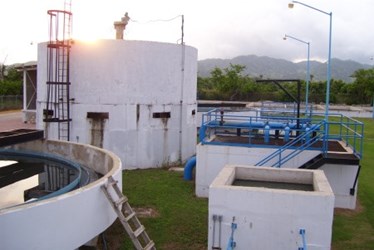Biogas By The Numbers

By Laura Martin

Looking to cut costs and become more energy efficient, an increasing number of wastewater treatment plants are turning to anaerobic digestion to create biogas.
To better understand the scope of anaerobic digestion and biogas generation in the United States, the North East Biosolids and Residuals Association, Black & Veatch, the Water Environment Federation (WEF), and other organizations, joined forces beginning in June 2011. Together they compiled data from 5,127 wastewater treatment plants (one-third of all permitted WWTPs), the EPA, and approximately 20 wastewater industry experts, to create the recently completed Biogas Database. Here’s what they found:
48% of total wastewater flow in the U.S. is estimated to be treated by anaerobic digestion. New Mexico, Illinois, California, and Hawaii have the highest percentages of wastewater flow being treated using this method.
1,238 wastewater treatment plants (WWTP) use anaerobic digestion to process solids. Hawaii, Washington, and California have the highest percentages of WWTPs that process solids through anaerobic digestion.
1,054 of WWTPs utilizing anaerobic digestion beneficially use the biogas created.
48% use the biogas for digester heating.
27% use the biogas for building heating.
16% of WWTPs use biogas for electricity generation, most often via internal combustion engine generators, followed by turbine generators, microturbines, and fuel cells.
8% use the biogas to drive process machinery.
1% use the biogas for pipeline injection.
17% of WWTPS with anaerobic digestion co-digest organic waste from other facilities with bio-solids. Organic waste used includes grease trap waste, food waste, animal processing wastes, manures, and biosolids generated from other facilities.
The number of facilities utilizing anaerobic digestion grows every day. Check out the Biogas Database’s list of WWTPs to find out where biogas is being produced near you and how it is being applied. The data includes each facility’s identity, location, flow metrics, biogas production attributes, and electricity production attributes. Those interested can also access, read, and/or download reports developed through the biogas data project and other related projects on http://www.biogasdata.org/reports.
The investigation into biogas generation is far from over. Extended information is expected to be added to the database in the near future as part of “Phase 2” of the data collecting program.
For more information about creating and managing biogas check out “The Important Role Of Ultrasonic Flowmeters In Biogas Production” and “Biogas Flow Measurement Challenges And Solutions” on Water Online.
